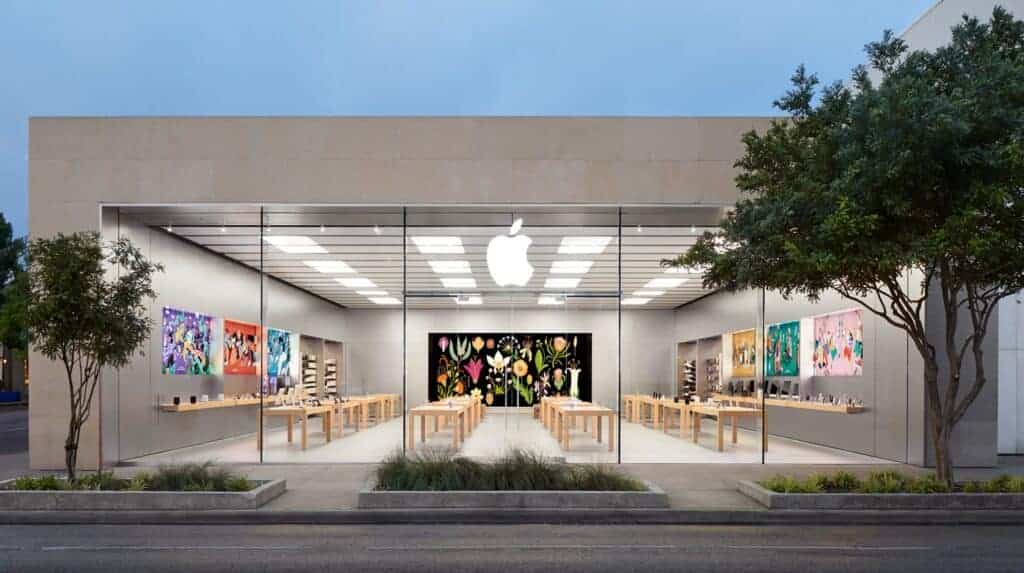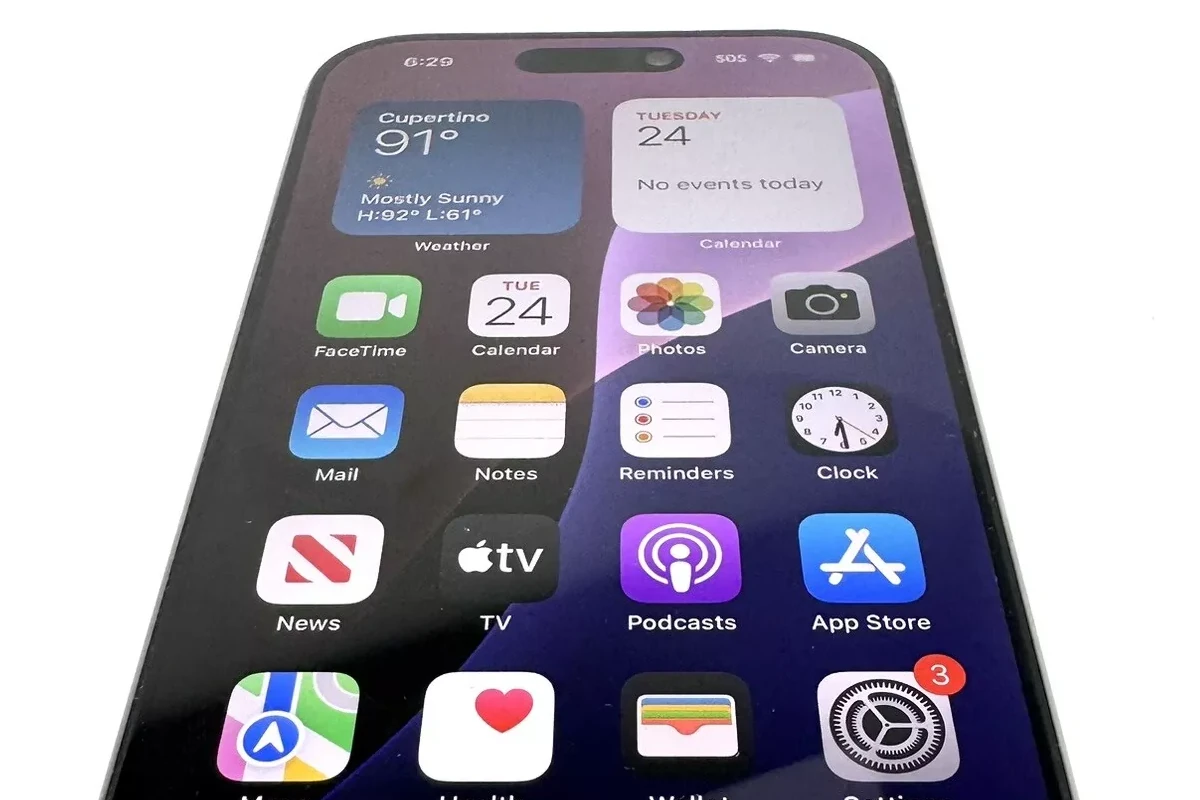Apple has become the leader in the smartphone market, ending Samsung’s 12-year top position. In 2023, Apple took 20.1% of the global smartphone market share, while Samsung had 19.4%. This shift represents a significant change in competition. Apple has done well in the smartphone industry, but its leading position could be challenged. This article looks at what might affect Apple’s status, analyzes its strengths, and gives insights into its future in smartphones.
Apple faces growing competition and changing consumer preferences, but its loyal customers, strong ecosystem, and focus on innovation suggest that it will stay a key player in the smartphone market for years. Apple’s success comes from strong iPhone sales, especially the new iPhone 15 series. In Q4 2023, Apple shipped 72.1 million iPhones. This helped Apple gain the lead, even with a 3.2% drop in overall smartphone shipments worldwide. The smartphone market is always changing. While Apple is on top now, what happens next is uncertain. Other brands like Xiaomi are also increasing their market share. The industry will keep evolving as companies compete for customers with new features and designs.
Will Apple’s Reign as Smartphone King Ever End?
Apple has dominated the smartphone industry for years, consistently delivering innovative products and cultivating a loyal customer base. However, the tech landscape is constantly evolving, and challengers are emerging. Will Apple’s reign ever end?
Factors that Could Challenge Apple’s Dominance
Several factors could potentially disrupt Apple’s stronghold on the smartphone market:
- Increased Competition: While Apple and Samsung have long been the dominant players, other companies like Google and rising Chinese brands are gaining market share with competitive devices and aggressive pricing strategies.
- Market Saturation: The smartphone market is maturing, and growth is slowing. Most consumers in developed countries already own smartphones, making it harder for Apple to attract new customers.
- Changing Consumer Preferences: Consumer preferences are shifting towards more affordable devices and a wider range of choices. This could favor companies that offer a broader selection of devices at different price points.
- Technological Disruption: New technologies, such as foldable phones and advancements in AI, could disrupt the market and create opportunities for competitors to gain an edge.
- Economic Factors: Global economic downturns or fluctuations in currency exchange rates could impact Apple’s sales and profitability.

Apple’s Strengths
Despite these challenges, Apple has significant strengths that will be difficult to overcome:
- Brand Loyalty: Apple has cultivated a fiercely loyal customer base that values its design, ecosystem, and brand prestige.
- Strong Ecosystem: Apple’s tightly integrated ecosystem of devices and services locks customers into its platform, making it difficult for them to switch brands.
- Innovation: Apple continues to innovate with new technologies and features, such as its M-series chips and advanced camera systems.
- Financial Strength: Apple has a massive cash reserve and strong financial performance, allowing it to invest heavily in research and development and weather economic storms.
The Future of Apple’s Smartphone Reign
While Apple faces challenges, it is unlikely that its reign will end abruptly. The company’s brand loyalty, strong ecosystem, and continued innovation give it a significant competitive advantage. However, Apple will need to adapt to changing market dynamics and consumer preferences to maintain its position.
It is more likely that the smartphone market will become increasingly fragmented, with multiple players vying for market share. Apple may face more competition and see its market share decline, but it is likely to remain a major player in the smartphone industry for the foreseeable future.
How Apple Can Maintain its Edge
To stay ahead of the curve, Apple can focus on several key areas:
- Expanding its product portfolio: Offering a wider range of devices at different price points can attract a broader customer base.
- Investing in emerging technologies: Staying at the forefront of technological advancements, such as foldable phones and AI, can help Apple maintain its reputation for innovation.
- Strengthening its services business: Expanding its services offerings, such as Apple Music and Apple Pay, can create new revenue streams and increase customer loyalty.
- Focusing on sustainability and social responsibility: Addressing environmental and social concerns can enhance Apple’s brand image and appeal to a wider audience.
Key Takeaways
- Apple became the top smartphone seller in 2023, ending Samsung’s long-time lead
- iPhone sales, especially the iPhone 15 series, drove Apple’s market share growth
- The smartphone industry remains competitive, with other brands gaining ground
Market Dynamics and Competitive Landscape
Apple’s position in the smartphone industry faces challenges from rivals and changing market forces. The company’s success depends on its ability to adapt to new trends and consumer needs.
Current Market Position of Apple
Apple reached a major milestone in 2023. For the first time ever, it became the world’s top smartphone maker by volume. This ended Samsung’s 13-year reign as the industry leader.
Apple shipped 234.6 million iPhones in 2023. This gave the company a 20.1% market share. Apple’s sales grew 3.7% compared to the previous year.
The shift shows Apple’s strength in selling high-end phones. More people are buying pricier smartphones, which helps Apple’s bottom line.
Global Smartphone Market Share Trends
The smartphone market is changing fast. Apple’s rise to the top spot marks a big shift.
Samsung dropped to second place after losing 13.6% market share. This shows how tough the competition has become.
Chinese brands like Xiaomi, Oppo, and Huawei are gaining ground. They offer good features at lower prices.
Transsion, a lesser-known brand, is growing in emerging markets. It focuses on budget-friendly phones for Africa and other regions.
Competitors on the Rise
Chinese smartphone makers are becoming stronger rivals to Apple and Samsung. They’re improving their products and expanding globally.
Xiaomi offers high-end features at mid-range prices. This appeals to budget-conscious buyers who want premium experiences.
Huawei is bouncing back after facing U.S. sanctions. It’s focusing on its home market in China, where it remains popular.
Oppo and Vivo are growing in Asia. They’re known for innovative features and sleek designs.
Shifts in Consumer Preferences
People’s phone buying habits are changing. Many now keep their phones longer before upgrading.
There’s growing interest in foldable phones. Samsung leads this niche, but other brands are joining in.
5G is becoming a must-have feature. Consumers want faster internet speeds for streaming and gaming.
Privacy and security are bigger concerns. Apple’s focus on these areas has helped win customer trust.
Influence of Economic Factors
Economic issues affect smartphone sales. High inflation and rising living costs make people think twice before buying new phones.
Apple has used smart strategies to boost sales. These include:
- Interest-free financing
- Trade-in offers
- Discounts on older models
The company’s focus on premium devices helps maintain profits. Even when overall sales slow, Apple can earn more per phone sold.
Emerging markets present growth opportunities. But they also bring challenges, as many consumers there prefer cheaper options.
Frequently Asked Questions
Apple’s dominance in the smartphone industry faces ongoing challenges and opportunities. The company must navigate changing market conditions and consumer preferences to maintain its top position.
What factors could lead to a decline in iPhone sales?
Economic downturns can impact iPhone sales. High prices may deter budget-conscious buyers. Strong competition from Android devices could also reduce Apple’s market share.
Saturation in key markets like the US and China may slow growth. Longer smartphone replacement cycles could lead to fewer annual sales.
How is the competitive landscape in the smartphone industry impacting Apple’s market share?
Chinese brands like Xiaomi and Oppo offer feature-rich phones at lower prices. This pressures Apple in price-sensitive markets.
Samsung remains a strong rival with its diverse product lineup. Google’s Pixel phones appeal to Android fans seeking a pure experience.
Are there any emerging technologies that could disrupt Apple’s business model in the smartphone sector?
Foldable phones may gain popularity, challenging Apple’s current designs. Augmented reality could shift focus away from traditional smartphones.
5G technology might level the playing field among manufacturers. AI advancements could make software more important than hardware.
What strategies is Apple implementing to maintain its position in the smartphone industry?
Apple focuses on ecosystem integration to retain customers. The company invests heavily in chip design for performance advantages.
Regular iOS updates add new features to older iPhones. Apple also expands its services to increase revenue per user.
How do consumer preferences and behaviors affect Apple’s dominance in the smartphone market?
Brand loyalty keeps many users in the Apple ecosystem. Privacy concerns benefit Apple’s image as a secure option.
Demand for larger screens influenced Apple’s product lineup. Consumer interest in camera quality drives iPhone photography features.
What are the potential consequences for Apple if they do not innovate in the smartphone industry?
Market share could decline as competitors offer new features. Apple’s brand image as an innovator might suffer.
Profit margins may shrink if Apple can’t justify premium prices. The company could lose its influence in setting industry trends.







